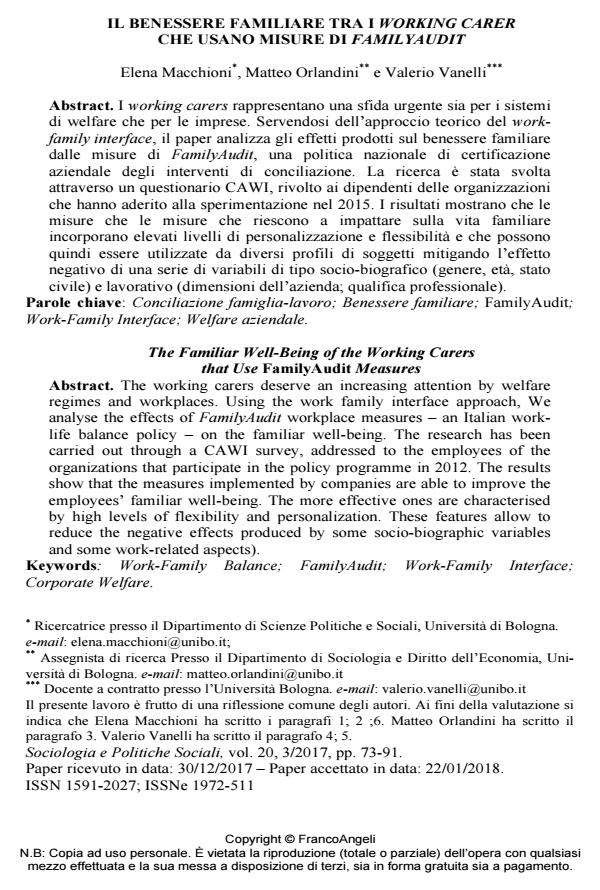Il benessere familiare tra i Working Carer che usano misure di Familyaudit
Titolo Rivista SOCIOLOGIA E POLITICHE SOCIALI
Autori/Curatori Elena Macchioni, Matteo Orlandini, Valerio Vanelli
Anno di pubblicazione 2018 Fascicolo 2017/3
Lingua Italiano Numero pagine 19 P. 73-91 Dimensione file 269 KB
DOI 10.3280/SP2017-003005
Il DOI è il codice a barre della proprietà intellettuale: per saperne di più
clicca qui
Qui sotto puoi vedere in anteprima la prima pagina di questo articolo.
Se questo articolo ti interessa, lo puoi acquistare (e scaricare in formato pdf) seguendo le facili indicazioni per acquistare il download credit. Acquista Download Credits per scaricare questo Articolo in formato PDF

FrancoAngeli è membro della Publishers International Linking Association, Inc (PILA)associazione indipendente e non profit per facilitare (attraverso i servizi tecnologici implementati da CrossRef.org) l’accesso degli studiosi ai contenuti digitali nelle pubblicazioni professionali e scientifiche
I working carers rappresentano una sfida urgente sia per i sistemi di welfare che per le imprese. Servendosi dell’approccio teorico del workfamily interface, il paper analizza gli effetti prodotti sul benessere familiare dalle misure di FamilyAudit, una politica nazionale di certificazione aziendale degli interventi di conciliazione. La ricerca è stata svolta attraverso un questionario CAWI, rivolto ai dipendenti delle organizzazioni che hanno aderito alla sperimentazione nel 2015. I risultati mostrano che le misure che le misure che riescono a impattare sulla vita familiare incorporano elevati livelli di personalizzazione e flessibilità e che possono quindi essere utilizzate da diversi profili di soggetti mitigando l’effetto negativo di una serie di variabili di tipo socio-biografico (genere, età, stato civile) e lavorativo (dimensioni dell’azienda; qualifica professionale).
Parole chiave:Conciliazione famiglia-lavoro; Benessere familiare; FamilyAudit; Work-Family Interface; Welfare aziendale.
Elena Macchioni, Matteo Orlandini, Valerio Vanelli, Il benessere familiare tra i Working Carer che usano misure di Familyaudit in "SOCIOLOGIA E POLITICHE SOCIALI" 3/2017, pp 73-91, DOI: 10.3280/SP2017-003005